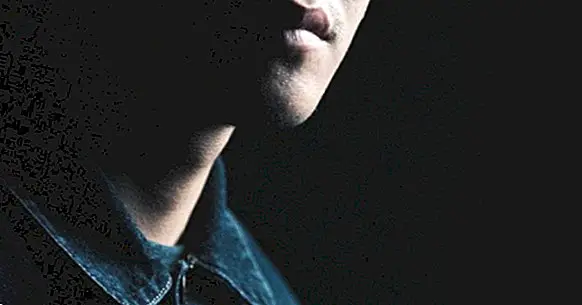Nosophobia (fear of getting sick): symptoms, causes and treatment
Although the concern for one's own health and the fact of not wanting to get sick is a normal and rational reaction that is given by the need to avoid pain and for own survival, when this worry becomes an excessive and irrational fear we can be facing a case of nosophobia .
Throughout this article we will talk about this exaggerated fear of contracting a disease; as well as the symptoms that it presents, the causes and the possible treatments to which the patient can be submitted.
- Related article: "Types of phobias: exploring the disorders of fear"
What is nosophobia?
Nosophobia is categorized within the specific disorders of anxiety and is characterized by causing the patient an exacerbated, irrational and uncontrollable fear to suffer or develop a deadly disease.
Although it does not always have to be this way, nosophobia is more common in people whose work or context is closely related to the world of diseases or health , as well as in health science students. It is hypothesized that the reason for this higher incidence may be related to the imprint or impression that some pathologies can cause in the mind of the person.
One of the characteristics of people suffering from nosophobia is that, although for them any symptom can be a sign of a deadly disease, avoid at all costs go to the doctor's office . The reason for this is in the exacerbated fear of discovering that they have a dangerous or lethal condition, so they prefer to live without finding out.
In addition, these patients feel total aversion to the passage of time and the fact of completing years. Since at older age more chances of developing a deadly disease and closer is death.
How to differentiate it from a normative fear?
Experiencing a certain fear of contracting or developing any type of disease, especially if it is deadly or poses a serious risk to health, is completely normal; since it is an evolutionary reaction and follows an instinct for survival. Hence, it is so important to specify the characteristics that distinguish a phobic fear from a habitual or normative fear.
The first difference is that the phobic fear is completely irrational, the person is unable to find a logical reasoning or basis to fear who experiences and may even come to accept this irrationality but still can not fight against it.
The second distinction proper to this type of disorder is that the fear experienced is completely disproportionate to the real threat that exists. Although at present there is always the possibility of developing a deadly disease, the level of fear experienced by these people is excessive and exaggerated.
Finally, in phobic fears the person is absolutely unable to control the fear experienced. This means that the person can not prevent feelings and feelings of anxiety from appearing , as well as the intrusion of intrusive thoughts and beliefs that enhance this anxiety.
Nosophobia and hypochondria: differences
Although it is true that both psychological alterations are related and that a hypochondriac person can develop nosophobia, there are certain features that differentiate each of the disorders.
The first one, and more distinctive, is that unlike a hypochondriac person, who suffers from nosophobia does not believe he has developed the disease , he only experiences a deep fear of doing it.
In addition, as mentioned above, a person with hypochondria makes constant visits to the health center in order to confirm their suspicions while in nosophobia is avoided by all means go to the doctor.
It is an avoidance mechanism with which the person can avoid any risk of discovering a deadly disease. Likewise, people with nosophobia avoid contact with sick people, talk, read or watch films or documentaries that may be related to diseases.
Unlike hypochondriacs, who are dedicated to research or find all possible information on any disease, nosophobia is preferred to ignore and ignore any of these issues for fear of being recognized.
- Maybe you're interested: "Hypochondria: causes, symptoms and possible treatments"
What are the symptoms of this anxiety disorder?
Throughout the article, some of the characteristic symptoms of nosophobia have already been mentioned. However, it is necessary to specify that, since it is a specific anxiety disorder, There are many other symptoms in relation to this type of phobias .
As in the rest of the phobias, the clinical picture of nosophobia is divided into three groups: physical symptoms, cognitive symptoms and behavioral symptoms.However, although most people experience the same symptoms, this phobia presents a great variability between people.
In physical symptoms the person experiences an increase in the activity of the nervous system , which translates into symptoms such as increased blood pressure, tachycardia, muscle tension or stomach pains among many others.
Regarding the cognitive symptomatology this is distinguished by the presence of a series of irrational ideas and beliefs in relation to the possibility of developing a potentially deadly disease.
Finally, as mentioned in the previous point, the person also experiences a series of behavioral symptoms. In the specific case of nosophobia, the person tends to execute avoidance behaviors such as not going to the doctor, avoiding medical check-ups and trying to stay away from any information or exposure related in any way to lethal diseases.
What are the causes?
Although it is very difficult to find out the specific cause of a phobia, It is hypothesized that a genetic predisposition, coupled with the experimentation of highly traumatic experiences It can lead to the development of phobias.
In the specific case of nosophobia, the experience of the death of a loved one or close by a deadly disease may be enough to develop this phobia. In addition, the fact of being constantly exposed to media or environments in which death by illness is a common occurrence (hospitals, nursing homes, health centers) or being a student of any branch of health, are also risk factors at the time of acquiring this type of anxiety disorder.
Is there a treatment?
Fortunately, there are different psychological therapies that can help reduce the intensity of the symptoms of nosophobia to the point of disappearing. The intervention through cognitive restructuring it can favor the elimination of irrational thoughts and beliefs, which form the basis of this disorder,
Of the same, treatment by systematic desensitization, in which the patient is mentally and gradually exposed to the feared thoughts or situations, accompanied by a training in relaxation techniques are very effective at the time the person can restore your usual rhythm of life.



















